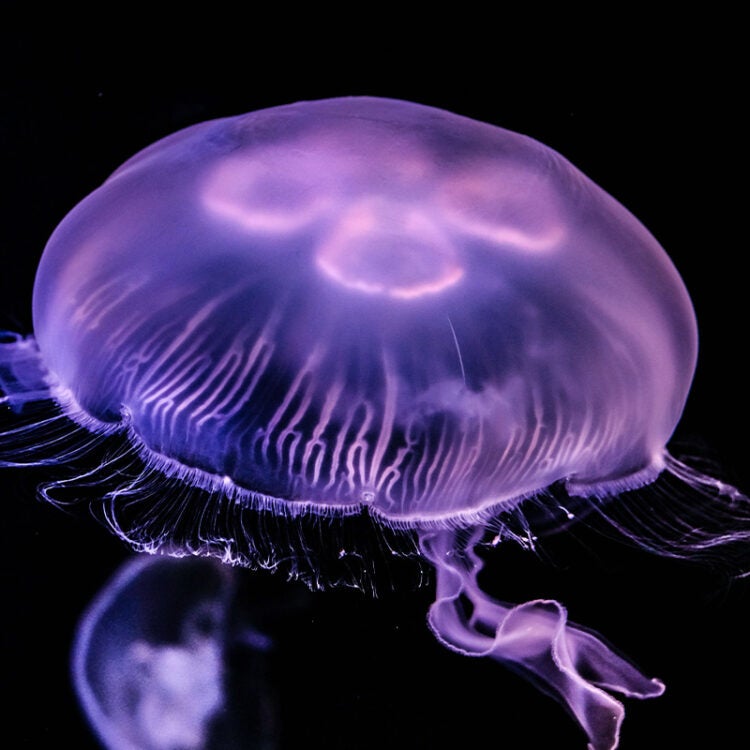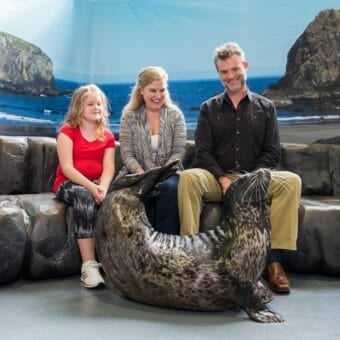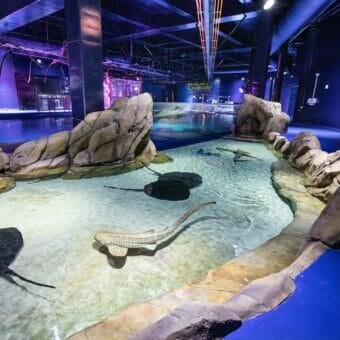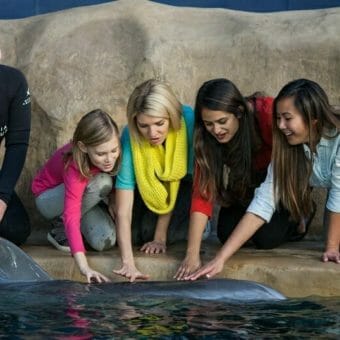-
Size
Maximum diameter of 2 feet (61 cm) -
Diet
Zooplankton, small shrimps, fish eggs and larvae -
Range
Worldwide in temperate seas -
Habitat
Surface water over reefs and along the coast
Physical Characteristics
- Translucent and whitish in color, often shaded with pink or blue.
- The main parts include a shallow dome-shaped bell that can reach 2 feet (61 cm) in diameter, with numerous short, fine, fringe-like tentacles around the margin.
- In open water, extends tentacles that hang down like a veil. The four white, horseshoe-shaped structures that can be seen through its translucent bell are reproductive organs.
- Four oral arms hang down from the center of the bottom surface of the bell. These arms are not always obvious.
Diet / Feeding
- Diet consists primarily of zooplankton, including small shrimps, fish eggs and larvae.
- Collects food on the upper and lower surfaces of the bell where cilia carry it, entrapped in mucus, to the margin. Food collects in small pockets, where it is removed by the tips of four long arms that then transfer the food to the gastrovascular cavity located in the middle of the underside of the bell.
Range / Habitat
- Occurs worldwide in temperate seas.
- Found in surface waters, often over reefs and along the coast.
Reproduction & Growth
- Eggs are fertilized internally in females by sperm released by males into nearby water.
- Moon jellies have a three-stage life cycle: polyp, ephyrae then medusa.
- Embryos develop on special grooves in the adult female’s arms. Young are released into the water as free-swimming larvae.
- Polyps are formed once the free-swimming larvae settle.
- When the polyps undergo an environmental change they bud off ephyrae. The ephyrae will feed off of plankton until it reaches adult size, which is known as the medusa.
Conservation Status
- “Not Evaluated” on the IUCN Red List.
Additional Information
- Commonly seen washed up on beaches.
- Principal food for leatherbacks and several other species of sea turtles, as well as other marine creatures (including other jellies).
- Many marine animals die every year ingesting floating plastic bags, mistaking them for moon jellies or other jelly species.
- Despite not having eyes to see, or a brain to think, jellies have adaptations that allow them to orientate themselves within the water column. For example, jellies have rhopalia, which are small sensory structures. In the moon jelly, they lie all around the bell. They also have specialized light-sensing structures called ocelli, and utilize statoliths, (tiny internal granules) to perceive gravity.
Sources
- Seashore Animals of the Southeast. Ruppert, E. E. and Fox, R. S. pgs. 29-30
- Reef Creature Identification: Florida, Caribbean, Bahamas. Humann, P. and Deloach, N., pg. 84
- Guide to Marine Invertebrates, Alaska to Baja California. Gotshall, D. W., pg. 24
- Southeastern and Caribbean Seashores. Kaplan, E. H., pg. 207







